I’d just finished writing a post about something I’d seen at the Garden Museum when I realised there might be some readers who wouldn’t know anything about the subject and would need a bit of background. So I started writing that and of course the piece became so long that I had to split it into two… so today’s is the introduction to next weeks!
It’s about the 17thc gardeners John Tradescant and his son, also John. They were an extraordinary pair: Gardeners to the aristocracy and royalty, plant hunters, nurserymen and founders of the first museum to be open to the public. Famous in their own lifetimes, and continuously in the centuries since, their lives have even been romanticised by a modern novelist.
But how much do you actually know about them?
The elder John Tradescant is probably the first English gardener for whom we have a fairly complete outline career. And it’s a pretty meteoric one. Although little is known of his early life, by 1610 he was working as gardener at Hatfield House for James I’s chief minister, Robert Cecil, the 1st Earl of Salisbury. No-one knows how he got his training or the recommendation for the job but Cecil was powerful enough only ever to employ the best. Tradescant’s colleagues in the earl’s service included Salomon de Caus and Inigo Jones.
Apart from his marriage in 1607 the first documentary evidence is a letter written by him in November 1609 from Holland, and it maybe that it was Cecil who had sent him there. The Hatfield accounts show him in the earl’s service from January 1st 1610 for the generous sum of £50pa. When in the Low Countries he certainly noticed the plants he saw in gardens and nurseries because the following year he wrote to William Trumbull, an English diplomat in Brussels with a long list of things he wanted him to obtain for the gardens at Hatfield. Amongst the improvements Cecil wanted a vineyard there “and hath the frenche men to make it” so Tradescant asked Trumbull to get cuttings or plants from the archduke’s garden. Others were to come from a Brussels nurseryman. His letter is signed “John tradeskent garner to the Lord Tressurer.”

The signature on his will image from Strange Blooms
The old Tudor palace had only come into the earl’s hands in 1607 when the king effectively forced a swap with the family’s old home at Theobalds. Rather than remodel he decide to demolish and rebuild while the extensive new gardens were being laid out and planted at the same time by Mountain Jennings. Tradescant worked alongside Jennings until at least the end of 1612, particularly obtaining plants from abroad. He also rented 59 acres of land from the earl presumably to farm for profit and to use as a nursery base for growing stock for sale not just to the earl but other clients too.

The Botanic Garden in Leiden in 1610 which Tradescant must have visited on his trips to the Low Countries
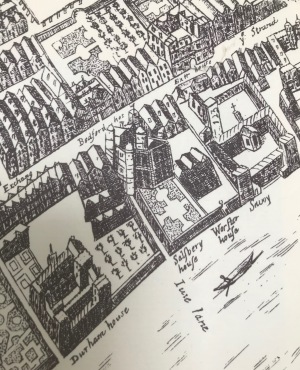
Salisbury House, from Faithorne and Newcourt’s “Exact Delineation of London”, surveyed in the 1640s
He spent the autumn of 1611 visiting gardens and nurseries all over the Low Countries before heading to Paris and doing the same, including visiting Jean Robin at the Jardin du Roi. The bills totalling £140 survive in the Hatfield archives mainly for fruit trees and bulbs. Some were sent to Salisbury House, the earl’s London base on the Strand where Tradescant also carried out substantial improvements to the garden.
Tradescant’s meeting with Jean Robin led to a friendship and regular exchange of plants that only ended when Robin died in 1629. But it’s also noteworthy that Tradescant is also recorded as buying natural history specimens such as ” a buffeels horne” an ‘Artyfyshall bird” and 8 boxes of shells. It was the start of what was to become his famous museum.
The earl died in 1612 and by the summer of 1615 Tradescant had moved on to be gardener to Edward, Lord Wotton at St Augustine’s Abbey in Canterbury, a house that had previously belonged to Robert Cecil. There are comments about the rare plants that Tradescant introduced to gardens there in John Parkinson’s Paradisi in Sole. These included an unusual pomegranate that “was never seen in England before John Tradescante..bought it from parts beyond the seas.” Amazingly there is a short eye-witness account of the abbey gardens from 1635. They stretched to over 20 acres and apart from the usual gardens features the abbey’s “rare demolish’d Buildings sometimes appear in much Glory and Splendor”, and early case of the deliberate use of ruins as part of the design.
It was a sign of Tradescant’s growing status that he sent his son, also John, to Kings School Canterbury to receive the classical education that it’s clear, from his literary and language skills that he didn’t have himself.

detail from The South East Prospect of Chilham Castle, Kent
Samuel and Nathaniel Buck, 1741
During his time working for Wotton Tradescant went on two more overseas trips. The first in 1618 was to accompany Sir Dudley Digges, a Kentish neighbour of Wotton, whose garden at Chilham he is reputed to have designed, on a diplomatic and trade mission to Archangel in arctic Russia. His handwritten account of this voyage still survives. [There a transcription in Prudence Leith-Ross’s biography of Tradescant]. It shows his inquisitive nature. He observed the flora and fauna and collected whatever he could, including bird cherry, currants, cloudberry, roses and angelica. Again there were other exotica including articles of clothing such as “shooes to walk on snow without sinking” which were later displayed in his museum.

The Corne Flagge”: Gladiolus byzantinus, from Parkinson, 1629
Two years later he went on a less diplomatic voyage, to help suppress the pirates on the the Barbary Coast around Algiers who were a constant thorn in Mediterranean trade. James I set up a commission to advise on what could be done and amongst it members were Wotton, Francis Bacon and the plant-loving merchant Nicholas Leate who was a friend of both Gerard and Parkinson. The mission was a failure but Tradescant had several months to botanise wherever the fleet stopped including Malaga, Tetouan, Formentera, Majorca as well as the coast near Algiers itself. Amongst the many plants he seems to have bought back were Cistus, the horse chestnut, “corne Flagge” or [gladiolus byzantinus], Lilac [Syringa persica] and the Algiers Apricot.
Alongside them were more items for his growing collection including “Barbary spurs”, a Spanish tambourine, and “a hand of Jet usually given to children in Turky to preserve them from Witchcraft.”
His next patron was the royal favourite, George Villiers, 1st Duke of Buckingham. Money was no object in any of his gardens – and this too involved trips to the continent. In 1624, Tradescant returned to the Low Countries buying large numbers of trees probably for Burley-on-the-Hill the Duke’s house in Rutland, where large areas of woodland with a complex arrangement of avenues and rides was laid out under his supervision. He also oversaw the gardens of the Duke’s London bases Wallingford House and later York House on the Strand and finally New Hall in Essex where he laid out grand avenues in the French style. .

The garden of Pierre Morin in the Faubourg St Germain, drawn in 1649 by Richard Symonds. BL Harley Ms 1278 f.81v
taken from Prudence Leith Ross, A Seventeenth-Century Paris Garden, Garden History, Vol. 21, No. 2 1993
What’s interesting is that John was now trusted to be more than just the Duke’s gardener. When Buckingham went to Paris in 1625 to escort Henrietta Maria, Charles I’s new wife back to England, Tradescant was sent with “my Lorde’s stuff and trunks”, but then of course stayed on to buy plants from the Robins and the famous nursery run by the Morin family. The plants he later received from them are recorded in his copy of Parkinson’s Paradisi now in the Bodleian Library in Oxford. No sooner was the Duke back but he and Tradescant went off again, this time to Holland, the one on a diplomatic mission and the other buying trees.
Not only did the Duke collect houses he collected wholesale: paintings, sculptures, tapestries, and importantly for Tradescant “curiosities”. It was from New Hall that Tradescant sent a request to the Secretary to the Navy on behalf of the duke to those London merchants who were trading overseas, particularly in North America and West Africa
“I have Bin Comanded By my Lord to let yr worshipe understand that it is His Graces Plesure that ye should In His Name Deall with All Marchants from All Places But Espetially the Virginie and Bermewde and Newfound Land men that when they go Into those parts they will take Care to furnishe His Grace With All Maner of Beasts and fowels and Birds Alyve. Or If Not Withe Heads Horns Beaks Clawes Skins fethers flyes or seeds plants trees or shrubs. Also from Gine or Binne or Senego turkeye…. also from the East Indes withe Shells Stones Bones Egge Shells with What Cannot Com Alive..[and so the list continues before ending] and …. Any Thing that is strang.”:
His final trip with the duke was on the mission to the Ile de Ré in 1627, attempting to relieve the siege of the protestant stronghold of La Rochelle. He is described as “the Dukes gardiner now an Ingeneere.” Even there he went botanising in between organising the digging of trenches. The mission was a complete disaster and 60% of the Duke’s army died before they beat an ignominious retreat back to England, where the Duke was assassinated the following year.
It must have been about this time that Tradescant moved to South Lambeth with his family and his growing collection. It was semi-rural but still very close to the Thames, the main transport artery for the capital. He rented several fields, a 3 acre orchard and a house with about an acre where he set up his garden, all from the Dean and Chapter of Canterbury Cathedral. [The house remained standing until 1881 when the site was redeveloped]
Once again he noted new plant acquisitions in the back of his copy of Parkinson. The garden was visited by Thomas Johnson who revised and reissued Gerard’s Herbal in 1633, and who called Tradescant “that great Treasurer of nature’s rareities.” Tradescant published a list of the plants it contained in 1634.
In 1630 came his most prestigious appointment: Keeper of his Majesty’s Gardens, Vines, and Silkworms at Oatlands Palace in Surrey, one of the properties allocated to Henrietta Maria, Charles I’s wife. There he oversaw the building of arbours, a bowling green and an “orange garden”,[for citrus not orange coloured flowers!] complete with an early greenhouse, 262 feet long “with a colehouse adjoyning” to keep them over winter. This was a post he held until his death in April 1638. He was also [almost certainly] appointed curator of the Oxford Physic Garden in 1637.
Now we have seen that while Tradescant was buying and collecting for his masters he was also buying and collecting things for himself. His collection was an archetypal “Cabinet of Curiosity” – except that he was not a member of the elite and his collection was probably even more unusual than those of his contemporaries, and amongst the most extensive in Europe. Probably kept upstairs at his house on the nursery it quickly became famous, appearing in contemporary and later texts for example as “Tredeskin and his Ark of Novelties” The collection grew with gifts from merchants, sea captains, friends and even the king himself.
Tradescant went on to open his Ark to all-comers who could afford the 6d entrance fee, breaking the mould of exclusivity that normally surrounded such collections, and making it effectively the first museum open to the public in England.
Working with him was his son, John who had been born in 1608 and followed his father not just in name but in occupation. He married Jane Hurte in 1628, was admitted to the Gardeners Company in 1634 but then suddenly found himself a widower with two young children, Frances and John.
In 1637 he went on an expedition to Virginia ‘to gather up all raritye of flowers, plants, shells, &c.;’ and it was claimed he bought back about 200 different plants, although only 11 are attributed to him directly by Parkinson, including Gelsemium, Staphylea, Sarracenia, and Swamp Cypress. He is also thought to be responsible for the tulip tree and red maple. Like his father he also collected large numbers of natural history and ethnographic specimens to add to the Lambeth collection. You’ll often read that he made two more trips to Virginia in 1642 and 1654 but his biographer Jennifer Potter argues pretty conclusively that both these are doubtful to say the least.

Hester and her step-children Frances and John
The younger John returned in June 1638 to find his father had died and been buried at St Mary’s in Lambeth. He took over the running of the nursery and the collection but also found himself taking over as gardener to Charles I and Henrietta Maria, at Oatlands in his father’s place. In 1639 he married again. Hester Pookes had French ancestors and was related somehow to the families of court painters – Cornelius de Neve and John and Thomas de Critz. It was they who were to leave most of our known images of the family.
The Civil War loomed and John did not take up arms for the crown as did many other of their employees, but probably returned to Lambeth. By the time a survey of Oatlands was carried out by Parliament prior to sale in 1650 the gardens “may be made very usefull and profittable to the whole house if ordered and preserved as they ought to be.”

The elder John Tradescant on the title spread of the museum catalogue
The early 1650s were spent running the nursery and making a comprehensive catalogue of the contents of the Lambeth Ark which was finally published in 1656 as Musaeum Tradescantianum. The work is dedicated to the President and Fellows of the Royal College of Physicians, an indication that Tradescant thought of his collection as a contribution to serious knowledge and not “a mere rag-bag of novelties”. The catalogue has engraved portraits of father and son by Wenceslaus Hollar, who was a family friend.
It covered both the museum and the plants. The plant list shows he was growing at least twice as many species of plants as his father, including a much bigger range of herbs and medicinal plants. There were also many tender exotics implying that he built overwintering quarters for them. Some of these would have been included in a volume of paintings, “Mr Tradescant’s choicest Flowers and Plants exquisitely limned in vellum”, now lost, by Alexander Marshal who stayed with the Tradescants during the early years of the Civil War.
John Tradescant the younger died in 1662 not long after the Restoration which did not bring any return of royal favour. John left his widow Hester and daughter Frances, already a widow herself. His collection was left to Hester during her lifetime and then to Elias Ashmole, their neighbour in Lambeth. Quite how and why this decision came about is unclear but whether by plan or perhaps some sort of deception, Ashmole was, after Hester’s death in 1678 , able to use it as the basis for the museum in Oxford that bears his name. Some parts are now back on loan at the Garden Museum.

John was buried beside his father, his first wife and his son the third John, who died in 1652 aged 18 or 19, in the churchyard of St-Mary-at-Lambeth, which is now the Garden Museum. And it’s their tomb that I had started to write about, when I decided I needed to write this background piece. So for that you’ll have to wait for next week’s exciting instalment.
For more detailed information on the Tradescants the best place to start is Jennifer Potter’s meticulously researched and wide-ranging biography Strange Blooms (2006). I’d also recommend Prudence Leith-Ross’s, very readable The John Tradescants : gardeners to the rose and lily queen, published in 1984, just after the Garden Museum was being established, which is “borrowable” on Archive.org. There is also a 1964 biography by Mea Allen, The Tradescants. Their Plants, Gardens and Museum. And if you’re in mood for a romanticised version of the story try these two novels by Philippa Gregory

John the Younger’s signature on his will. Image from Strange Blooms

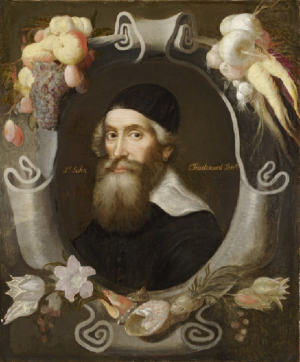





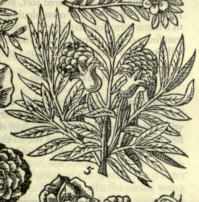

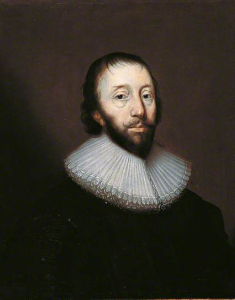
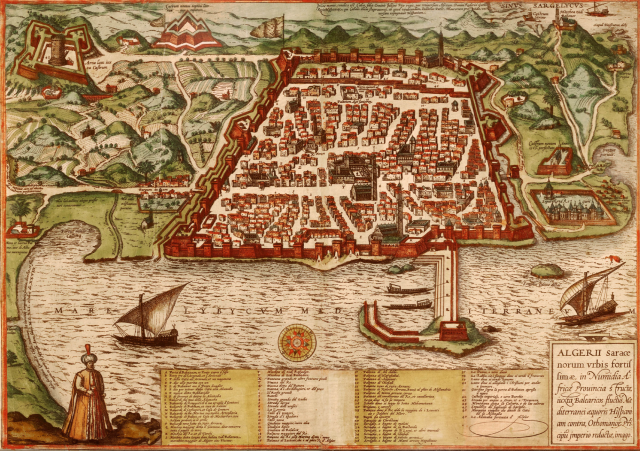















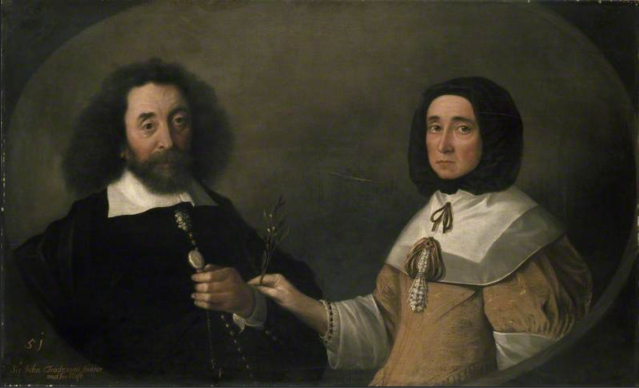

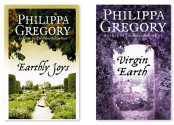
You must be logged in to post a comment.